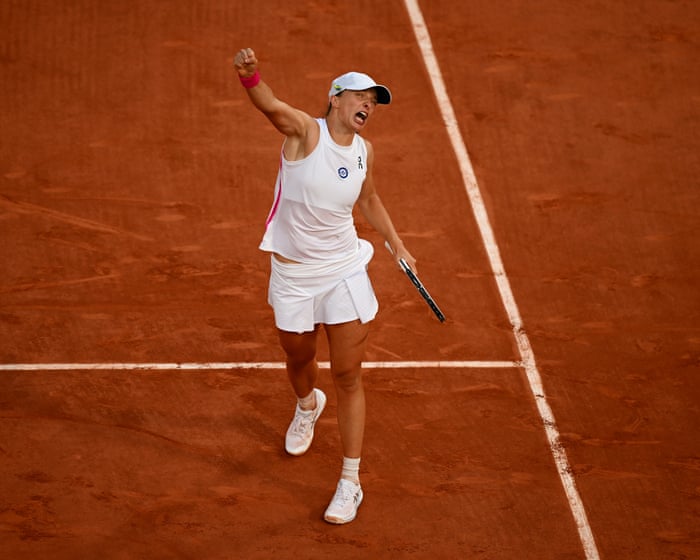Carlos Alcaraz’s biggest challenge in his third-round match at the Cincinnati Open on Friday wasn’t his opponent—it was staying patient. Before he and Hamad Medjedovic could step onto the court, they were forced to wait as Francisco Comesaña and big-serving Reilly Opelka battled through a chaotic three-hour, three-set match filled with momentum swings, medical timeouts, and even a last-minute rain delay. With no clear start time, Alcaraz and Medjedovic had to stay ready, a frustrating but familiar part of a tennis player’s job.
Hours later, after securing a straightforward win, Alcaraz laughed wryly in a quiet hallway, reflecting on the hours of preparation that proved more stressful than the match itself. “Well, it sucks,” he said with a smile. “Having to warm up three or four times is horrible. I thought Opelka’s match would be quicker—I didn’t expect three hours.”
His experience highlights one of tennis’s unique challenges: matches rarely have fixed start times. Players must stay focused despite the uncertainty. Karen Khachanov, the world No. 12, puts it bluntly: “In other sports—NHL, football, soccer—players know their schedule in advance. In tennis, you have to adapt constantly.”
The sport’s scoring system adds another layer of unpredictability. A match can turn at any moment, and even a player one point from victory might still be on court hours later. Nearly every player has a story of a preceding match throwing off their rhythm.
For Iga Świątek, the 2023 French Open semifinal stands out. Before facing Beatriz Haddad Maia, she endured the rollercoaster of Karolína Muchová’s comeback against Aryna Sabalenka. “Aryna was up 5-2 and lost in the third set,” Świątek recalls. “I warmed up seven times—stressed, then indifferent, then hyped, then sleepy.”
Grand slams amplify the frustration, especially when stuck behind marathon five-setters. Madison Keys remembers a US Open where two men’s matches went the distance, pushing her start time into the night session. “That’s when I decided we should ban five sets,” she jokes. Jessica Pegula agrees: “If you follow a five-setter at a slam, you’re screwed.”
Players aim to step on court energized, but repeated delays make it tough. “It’s hard to keep waking yourself up,” says Khachanov. “You warm up, get the adrenaline going, then suddenly there’s another set. Do you eat? Sleep? Stare at the ceiling? Play cards? Sometimes you just don’t know what to do.”Here’s a rewritten version of the text in fluent, natural English while preserving the original meaning:
—
Rybakina pleased to have controversial coach back after defeating Sabalenka
Emma Raducanu’s first major career moment during her breakthrough Wimbledon run in 2021 highlighted how unpredictable match scheduling can affect players. At just 18, Raducanu grew increasingly anxious while waiting for Alexander Zverev’s five-set match against Félix Auger-Aliassime to finish on Court No. 1. Overwhelmed by nerves, she took a medical timeout in the second set of her fourth-round match against Ajla Tomljanovic due to breathing difficulties, later describing it as a panic attack. She withdrew from the match, saying, “I had no idea what was happening. I think I had way too much coffee before the match—I was completely wired from the start of the day.”
Raducanu prefers early match slots to avoid uncertainty, but not everyone shares her view. Daniil Medvedev joked, “When I’m 35, I might just boycott 11 a.m. matches. I’ll say, ‘I didn’t wake up—sorry, guys.’ It’s so early—you have to get up at 6:30 a.m., whereas a night match lets you sleep until 9. It changes everything mentally.”
Players cope with delays in different ways. Carlos Alcaraz might play football, cards, or nap, while Andrey Rublev relies on his coach for updates. Coco Gauff laughs, “I’m usually just on TikTok.”
“Challenger level is about survival”: The harsh reality beneath elite tennis
Some, like Naomi Osaka and Madison Keys, immerse themselves in the preceding match. Keys says, “We’re all just watching the scores, yelling, ‘Come on!’—especially if you’re not on a main court and can’t actually see the match. You end up cheering for someone you’ve never met, then switching sides.”
Occasionally, players even watch alongside their next opponent. At the 2016 Australian Open, Roger Federer and Grigor Dimitrov sat together in the gym, groaning as Lauren Davis pushed Maria Sharapova to a deciding set. Dimitrov recalls, “It used to happen often—not so much now. Back then, players my age were fine with it. Things are different these days.”
Unpredictable scheduling can also lead to more serious issues.
(Image: Grounds crews sweep rain off the court during a weather delay at the Cincinnati Open.)
—
This version simplifies complex phrasing, removes redundant details, and improves readability while keeping the original meaning intact.The sport has developed some ridiculous and unhealthy habits, like the increasingly common late-night matches that drag on for hours. Take Andy Murray’s 4:05 am victory over Thanasi Kokkinakis at the 2023 Australian Open—while it was an amazing athletic feat, the scheduling was absurd. In response, the ATP and WTA have introduced new rules to prevent matches from starting after 11 pm unless given special approval.
For players, though, these delays are just another frustrating part of the game—one more challenge that makes tennis so demanding and fascinating. Carlos Alcaraz takes it in stride, saying, “It is what it is. We have to adapt. If I need to warm up two or three times, I’ll do it to make sure I’m ready to play my best.”
After years on tour, Madison Keys has reached the same mindset: “You just have to stay focused. It’s tough, but you manage your energy, eat when you can, warm up over and over, and remember—your opponent is dealing with the same thing. That’s all you can do.”
FAQS
### **FAQs: “Eat, Sleep, or Stare at the Ceiling” – How Elite Tennis Players Handle Match Delays**
#### **General Questions**
**Q1: What does “Eat, sleep, or stare at the ceiling” mean in tennis?**
A: It refers to how top tennis players manage unexpected delays by either eating to refuel, resting to recover, or staying mentally focused.
**Q2: Why do match delays affect tennis players so much?**
A: Delays disrupt rhythm, cool down muscles, and create mental frustration, making it harder to stay sharp when play resumes.
**Q3: How long can match delays last?**
A: They can range from minutes to hours or even overnight.
—
#### **Player Strategies**
**Q4: What do players eat during long delays?**
A: Light, energy-boosting snacks like bananas, energy bars, or small pasta portions to avoid feeling sluggish.
**Q5: Do players nap during delays?**
A: Some do if the break is long enough, but most stay awake to maintain focus with light stretching or mental exercises.
**Q6: How do players stay mentally sharp during delays?**
A: They use techniques like visualization, listening to music, or reviewing match strategies with their coach.
—
#### **Common Challenges**
**Q7: What’s the biggest mistake players make during delays?**
A: Overeating or sitting idle too long, which leads to stiffness and loss of focus.
**Q8: How do delays impact a player’s physical readiness?**
A: Muscles cool down, increasing injury risk, so players do light warm-ups before restarting.
**Q9: Do delays favor one player over another?**
A: Yes—if one player was struggling, a delay can help them reset, while it might break the momentum of a dominant player.
—
#### **Advanced Questions**
**Q10: How do players adjust tactics after a long delay?**
A: They may change serve patterns, aggression levels, or footwork to adapt to slower conditions.
**Q11: What’s the best way to kill time during a rain delay?**
A: Players often




